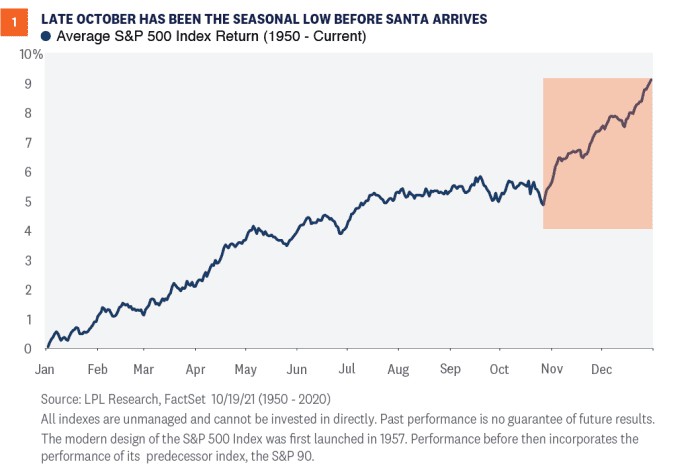This post was originally published on this site
The S&P 500 kicked off a busy week for third-quarter earnings on Monday by clinching its 56th record close of the year, reflecting a stunning 21.6% gain already this year.
Even more dramatically, the new high-water mark means the S&P 500
SPX,
has more than doubled since the worst of last year’s pandemic-induced meltdown, signifying a 104.1% gain from its bear-market low of 2,237.40 set on March 23, 2020, according to Dow Jones Market Data.
Despite its sharp gains, the market’s record-setting ways could still stick around a while longer, according to Ryan Detrick, chief market strategist at LPL Financial, who pointed to several reasons, including seasonal and economic factors, that indicate the S&P 500 could keep climbing into year’s end.
To start, there already was “a sort of stealth correction” this summer, where even while the S&P 500 has gained 8% since the end of April, the average individual stock in the benchmark actually endured a more-than-10% correction, Detrick said Monday in emailed commentary.
However, late October often marks the historical low before stocks typically rally into year’s end.

Has the S&P 500 already hit its late October low?
LPL Research, FactSet
“In fact, the fourth quarter as a whole is by far the strongest quarter historically, on average, with the S&P 500 rising 4% and finishing higher nearly 80% of the time,” he wrote. “November, meanwhile, is the strongest month of the year — both since 1950 and over the past decade.”
Beyond the seasonal, he pointed to “economically sensitive groups of stocks, commodities and even bond yields,” like financials
XLF,
and copper
HG00,
that were “largely stagnated since early May,” but recently have begun to push higher. The 10-year Treasury yield
TMUBMUSD10Y,
climbed to around 1.634% Monday, representing a more-than-50 basis-point increase since its low in July.
The Dow Jones Industrial Average
DJIA,
also notched a record close on Monday, while the technology-heavy Nasdaq Composite Index
COMP,
ended less than 1% away from its Sept. 7 closing record, according to Dow Jones Market Data.
Detrick also pointed to the sharp decline in U.S. COVID-19 cases since early September as a bullish factor for stocks and the record number of U.S. workers voluntarily quitting their jobs.
“Typically, quits are viewed as a sign of a strong economy and healthy labor market, as the most common reason for people voluntarily leaving their job is to start a new one — something workers are more hesitant to do in times of economic uncertainty,” he said.
To be sure, this fall could play out differently, with factors such as the Federal Reserve grappling with higher inflation, which has been sticking around longer than expected, and the central bank’s plans to start reducing its $120 billion in monthly emergency purchases of Treasury and agency mortgage-backed securities, a major source of market liquidity since March 2020.
Read: Yellen predicts inflation will return to normal in second half of 2022

